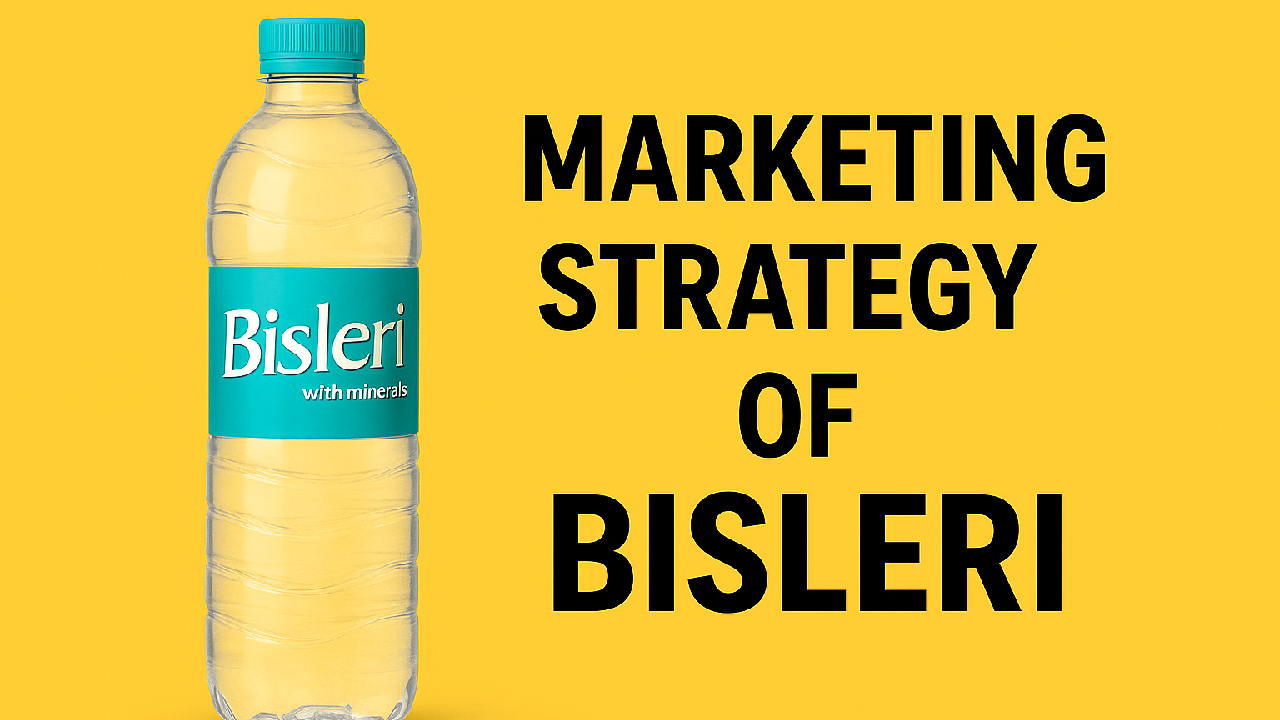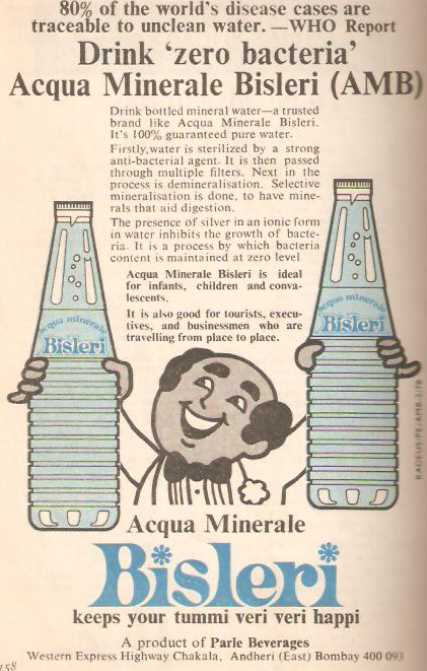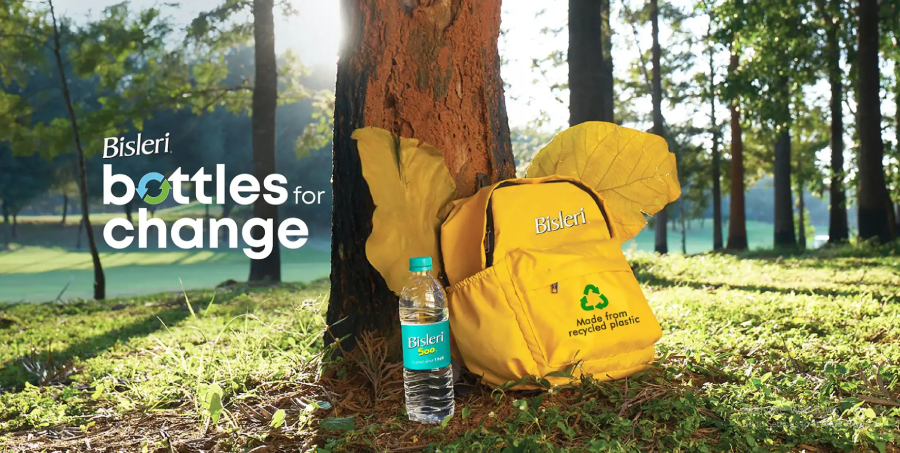
In a world where marketing is obsessed with complex products, innovative apps, and high-tech gadgets, can a brand built on something as simple as bottled water really be a marketing genius?
The answer, if you’re talking about Bisleri, is a resounding yes. It’s the kind of brand that makes you realise even a commodity can be a legend. After all, when you’re thirsty, do you ask for “bottled water,” or do you just say, “Bhaiya, ek Bisleri dena.”? For millions of Indians, the brand name has become a synonym for the product itself, a feat only achieved by marketing titans like Xerox, Google, and Maggi.
Bisleri’s journey is a masterclass in how to build a brand out of a simple commodity like bottled water. It’s a blueprint that any digital marketing agency would be fascinated to know.
Table of Contents:
- The Problem in sight: Selling a Commodity
- The Solution on hand: Spread awareness
- The Bisleri Breakthrough: Branding “Purity”
- Beyond Branding: Distribution as a Differentiator
- The Digital Drop: Bisleri’s Modern Strategy
- What Other Brands Can Learn From Bisleri
- Final Thoughts
- Frequently Asked Questions
The Problem in sight: Selling a Commodity

When Bisleri entered the Indian market in the 1960s, it was faced with a question that seemed absurd at the time: who would pay for water? In a country where water was freely available from taps, the idea of selling bottled water felt almost laughable. The market did not exist. Even in the 1970s, most of India’s population depended on untreated municipal water, and awareness of water-borne illnesses was still limited outside medical circles
Bisleri’s challenge was not just to launch a product, but to create an entirely new category. The brand had to convince consumers that the water they drank every day could be unsafe and that buying bottled water was not an indulgence, but a necessity.
The Solution on hand: Spread awareness
The first step was psychological: introduce doubt. By highlighting the risks of typhoid, cholera and jaundice caused by contaminated water, Bisleri framed purity as a life-saving promise rather than a luxury. The bottle was no longer just a container; it became a shield.
This was the genius of Bisleri’s early strategy. It did not market water. It marketed trust, safety and peace of mind. Once that foundation was laid, the idea of paying for water stopped being strange and started being smart.
The Bisleri Breakthrough: Branding “Purity”
- Once Bisleri had established itself as a trusted name, the market soon started flooding with cheap copies, bottles mimicking its packaging and brand name. These counterfeit products not only undercut prices but also risked damaging Bisleri’s hard-earned reputation for purity and safety.
- The “Har Paani ki Bottle Bisleri Nahi” campaign was an iconic response to this challenge. It directly addressed the proliferation of cheaper, unsafe water, making it clear that not all bottled water is created equal. The campaign strengthened Bisleri’s core promise of trust and quality by differentiating it from every other player in the market. It didn’t just sell water; it sold a promise of safety.
- The strategic storytelling in Bisleri’s ads was never about a generic bottle. They told a story. From a bottle rolling through a dusty landscape, untouched and pure, to the “Pure and Safe” claim, every element reinforced the brand’s identity as a trustworthy guardian of health. They created a visual and emotional language for something that, by nature, is invisible.
Beyond Branding: Distribution as a Differentiator
Marketing isn’t just about what you say; it’s about where you are. Bisleri understood that to be a ubiquitous brand, it had to be everywhere. It invested heavily in a variety of distribution networks, ensuring its bottles were available from the smallest roadside stall to the largest supermarket. While many smaller bottled water companies limited themselves to a semi-urban customer base, Bisleri expanded into tier 2 and tier 3 towns with an aggressive supply-chain push. By saturating markets beyond metros, it captured not only mindshare but also market share, leaving competitors scrambling to match its reach.
The results were clear (no pun intended). According to Economic Times (2018), Bisleri commanded over 32% of India’s bottled water market, a dominance largely attributed to its extensive and reliable distribution network
The Digital Drop: Bisleri’s Modern Strategy
Even a brand with such a strong physical presence must adapt to the digital age. Bisleri has intelligently leveraged online platforms to build on its legacy.
Instead of just running ads, it focuses on content marketing that educates and engages. For instance, their campaigns around hydration, water conservation and recycling (e.g., “Bottles for Change”) are amplified on social media, showcasing a brand with a purpose. A good digital marketing agency would recognise the strength of this kind of mission-driven content, turning simple CSR initiatives into powerful branding tools.
They’ve also used digital channels to connect directly with consumers, offering home delivery services and subscription models. This is a critical move, as it bypasses traditional retail and creates a direct, long-term relationship with the customer.

What Other Brands Can Learn From Bisleri
- Find a Problem You Can Solve: Don’t just sell your product; address a consumer pain point, even if you have to create awareness of it first. Bisleri sold safety, not just water.
- Brand, Don’t Commodify: In a sea of generic competitors, find your core promise and stick to it relentlessly. Bisleri’s consistency with “purity” is its biggest strength.
- Figuring Distribution is a must: A great marketing strategy is useless if the product isn’t available where it should be. A strong, reliable distribution network is a non-negotiable part of your marketing mix.
- Evolve with the Audience: Even with a legacy of success, a brand must adapt to new platforms and consumer behaviours. Bisleri’s shift to digital content and direct-to-consumer models is a prime example.
Final Thoughts

Everywhere you go, it’s Bisleri you see. Bisleri’s story is proof that you don’t need a complex product to build an iconic brand. You need a value-driven purpose, unwavering consistency and a deep understanding of your customer’s needs and fears. By transforming a commodity into a symbol of trust and purity, Bisleri did more than just sell water. It created a legacy, one bottle at a time.
Let’s build a strategy that makes you stand out. Contact a leading digital marketing agency today.



